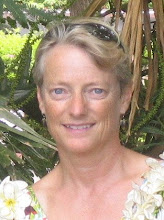20th April 2010. Perth, Australia. (Workshop at IEEE AINA 2010)
http://www.aina2010.curtin.edu.au/workshop/stamashup/
Paper deadline: 15th November 2009 (6 pages).
In recent years,* mashup* has emerged as a rapid and light-weight
development approach for creating distributed web applications. The advent
of easy-to-use, dynamic programming and scripting techniques (e.g. PHP,
AJAX, etc.), increasingly open APIs, service-oriented architecture (SOA),
dedicated frameworks and environments (eg. Facebook API Platform, Yahoo
Pipes) and the wide availability of free, syndicated content (eg RSS) has
provided myriad opportunities for people to create mashup-based web
applications in ways unprecedented to traditional software development
methods.
Mashups can bring data and functionality together in different ways and for
different purposes. They can be created by people skilled or unskilled in
programming, to play and experiment with the integration of information,
often across the boundaries of individual organizations. Perhaps their
greatest potential is for addressing transient problems for specific groups
of users in dynamically changing business, social or political contexts. The
implication of such an end-user development approach is far-reaching and
hence deserves extensive investigation.
Beyond all the hype, studies of the actual development and use of mashups
for delivering business, social or political value are extraordinarily rare..
While previous studies have focused on the technical side of constructing
infrastructure, little has been reported to demonstrate the real value or
identify the problems, practicalities and pitfalls of their construction.
Essentially, we need to understand how mashups emerge and change, succeed or
fail, in settings where people, policies, systems, and data are intertwined..
Our questions include:
* Who makes mashups?
* Why do mashups succeed or fail?
* Are useful mashups really quick to develop?
* Is it better to develop a lot of low fidelity mashups or a few well
engineered ones?
* How do communities of users emerge?
* How is the design of mashups participatory?
* What is the life cycle of a mashup?
* What business or social environments are conducive to mashup creation?
* What happens when bugs emerge in mashups?
* What happens when there are competing mashups to do the same job?
To answer these questions, a dual-focused approach that investigates both
social and technical aspects of mashups is crucial. The aim of this workshop
is thus to bring together academic researchers, industry practitioners and
open source community participants, for reporting research findings, sharing
practical experiences, and highlighting research challenges and future
directions in both the social and technical aspects of mashups. Topics may
include but are not limited to:
* Mashup usability, adoption, and diffusion
* Mashup and organizational behavior
* Collaborative activities and their coordination supported by mashups
* Mashup, semantics, and knowledge management
* Analysis of mashup applications for eWorkspace, eCollaboration, eLearning,
bioinformatics, eHealth, eResearch, eScience, eBusiness, etc.
* Mashup case studies and experience reports
* Mashup end-user programming, design and development methods
* Process/component models and formal specifications for mashups
* Responsibility and mashups
* Dependability and mashups
* Mashup tools, middleware, supporting run-time and open source
* Security, trust, and privacy issues in mashups
* Social networks and mashups
* Mashup paradigms including Web2.0, REST, SOA, ecosystems, etc.
Committee
Chen Wu, Curtin University of Technology, Australia
John Rooksby, University of St. Andrews, UK
Ian Sommerville, University of St. Andrews, UK
Arno Scharl, MODUL University Vienna, Austria
Ernesto Damiani, University of Milan, Italy
Richard Soley, Object Management Group, Inc. (OMG©), USA
Jeff Z. Pan, University of Aberdeen, UK
Paolo Ceravolo, University of Milan, Italy
David Greenwood, University of St. Andrews, UK
Antonio Izquierdo, National Institute of Standards and Technology, USA
Adam Lindsay, University of Lancaster, UK
Alexander Voss, University of St Andrews, UK
Alex Talevski, Curtin University of Technology, Australia
Marc W. Küster, University of Applied Sciences, Germany
Ashley Aitken, Curtin University of Technology, Australia
Daniel Berinson, Systec Engineering Pty Ltd, Australia
Ingrid Schirmer, Universität Hamburg, Germany
Max Noble, ILLIARC Pty Ltd, Australia

No comments:
Post a Comment